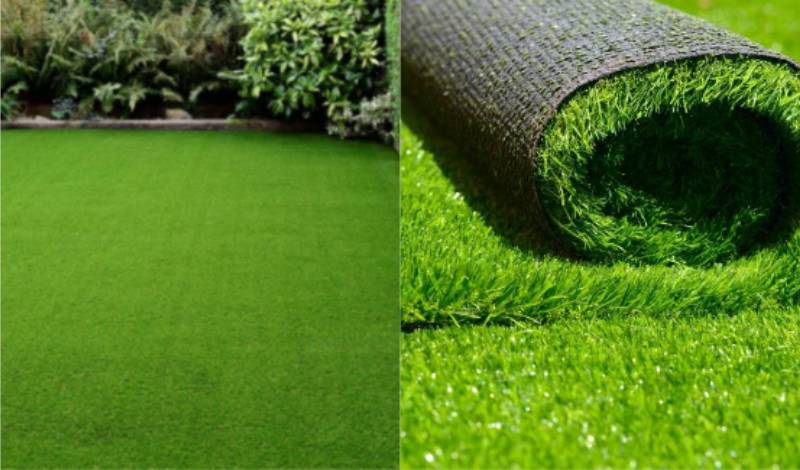Choosing the right flooring has been a source of worry for both homeowners and business owners. The reason is that there are multiple choices for flooring, and one gets confused about which one to choose. Two types are quite popular these days: LVT and SPC flooring. Today, we will tell you the difference between LVT and SPC flooring. You will have an idea in detail of what makes these two different from each other.
What Is LVT Flooring And Its Key Feature?
LVT (Luxury Vinyl Tile) flooring is the vinyl type that mimics the appearance of wood, stone, or ceramic materials. It has multiple layers that include;
- A backing layer
- A core
- A design layer
The design layer features the printed texture or pattern. The wear layer is transparent and prevents the flooring from damage, such as wear and scratches. LVT has become popular due to its affordability and ease of installation. One can have LVT flooring in multiple styles, such as modern marble or a rustic wood look.
Key Features Of LVT Flooring
Following are some key features of the LVT flooring.
- Versatile Design: It is available in various patterns, textures, and colors can mimic natural materials for its design layer.
- Walking Comfort: LVT is a bit flexible and thus offers slightly higher underfoot comfort than SPC flooring.
- Durable: Its vinyl composition provides it with a highly resilient surface that is resistant to cracks under impact.
- Water Resistant: This is the best flooring choice for areas in the house with moisture exposure. The best examples of it are rooms like bathrooms and kitchens.
What Is SPC Flooring And Its Key Features?
SPC (Stone Plastic Composite) Flooring is among the new forms of vinyl flooring. This flooring is made from PVC and Limestone powder with some stabilizers. This mixture of different materials results in a durable core for a rigid and sturdy plank of SPC flooring. These SPC floors are highly impact, water, and wear-resistant, perfectly able to withstand high foot traffic.
Key Features Of SPC Flooring
Check out these features to get a better idea of why SPC flooring is a good choice for living spaces.
- Rigid Core: The firm stone and plastic core of the SPC provides durability and strength. LVT is flexible, while SPC is rigid to provide better foot stability.
- Waterproof: SPC floors are completely waterproof, which means they can be installed in all moisture-prone areas, including commercial kitchens, bathrooms, and basements.
- High Impact Resistance: SPC floors’ high durability makes them resistant to dents, scratches, and stains. This makes them ideal for homes with high foot traffic.
- Temperature Regulation: SPC floors do not suffer problems of other flooring types like expanding and contracting due to rigid core.
Comparison Between LVT VS SPC Flooring
With the basic features of LVT and SPC now outlined, let’s look at the difference between LVT and SPC flooring. This comparison will make it easier to choose between the two when shopping.
1. Construction
LVT floors are basically vinyl flooring with a design layer to feature the look of a natural material. SPC floors on the other hand have rigid cores of PVC, limestone, and a stabilizer agent. This makes SPC much more robust than LVT.
2. Durability
LVT flooring is resistant to dents and scratches but it is soft compared to SPC, making it prone to impact damage in high-traffic areas. As for SPC flooring, it is much more durable and stable, allowing it to withstand heavy foot traffic. This gives SPC an edge over LVT flooring for commercial areas as well as residential floors.
3. Acoustics
LVT floors, as we know, are flexible. This allows them to absorb sound better, making them the best choice for quieter indoors. As for SPC flooring, its rigid core results in noisy foot sounds. This can still be fixed by adding an acoustic underlayment during the fitting of SPC flooring.
4. Cost
The price of LVT is slightly low when compared to SPC flooring, but this cost varies on quality and brand. SPC floors are far more expensive than LVT flooring. However, it is also a much more cost-effective investment due to its long-lasting durability and waterproof nature.
LVT VS SPC Flooring; Which One To Choose From?
The decision of choosing between LVT and SPC flooring is yours to make. It depends upon your specific needs and the area where it will be installed.
For Residential Areas
- LVT flooring is better suited for bedroom and living rooms due to its flexibility and design versatility.
- SPC flooring with its high resistance and durability is a choice suited for heavy-traffic areas like bathrooms, kitchens, and entryways.
For Commercial Areas
SPC flooring is the ideal choice for commercial space due to its ability to withstand high foot traffic and impact. It resists most scratches, watermarks, and dents.
For Moisture Prone Areas
When you are laying down flooring for areas that are moisture-prone, such as commercial kitchens or the basement of the house, SPC is the much safer choice. It is waterproof by nature, making it a great choice for homes with kids and pets.
Conclusion
LVT and SPC flooring both feature numerous benefits. But which one to choose comes down to your needs and preferences. For the ones looking for flexibility and underfoot comfort, LVT flooring is the ideal choice for residential living spaces like bedrooms and living rooms. LVT is flexible, which makes it able to absorb sound to keep the interior quieter. For those of you inclined towards durability and waterproofing, SPC flooring is a worthwhile investment. We have explained in detail the difference between LVT and SPC flooring; choose the option that matches your needs and requirements.




